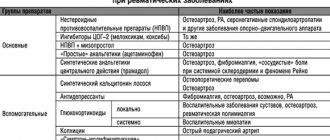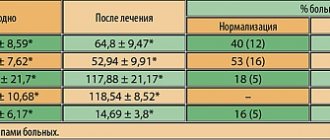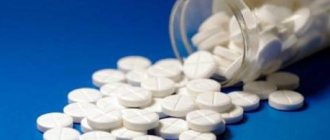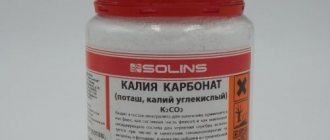A highly effective pain reliever is the drug Lyrica, offered by the well-known manufacturer PFIZER. The main active ingredient in it is pregabalin. Lyrica can be purchased in pharmacies only with a prescription.
The medicine is released in hard gelatin capsules of 75, 150 and 300 mg. They have the Pfizer inscription on the cap. The package can contain 14 or 56 tablets, sealed in blisters.
Pharmacological properties of the drug Lyrica
Pregabalin (S-3-(aminomethyl)-5-methylhexanoic acid) is an antiepileptic drug. Pregabalin binds to the auxiliary subunit (α2-δ protein) of voltage-dependent calcium channels in the central nervous system, actively replacing [3H]-gabapentin. Experimental evidence has been obtained that the binding of pregabalin to the α2-δ site is necessary for the manifestation of analgesic and anticonvulsant effects. In addition, pregabalin reduces the release of certain neurotransmitters, including glutamate, norepinephrine, and substance P. The significance of these effects for the clinical pharmacology of pregabalin remains unknown. Pregabalin does not show affinity for receptor sites and does not alter the response associated with some drugs commonly used for seizures and analgesia. Pregabalin does not interact with GABA receptors (GABAA or GABAB), is not metabolized to GABA or a GABA agonist, and does not inhibit GABA uptake or degradation. Pregabalin prevents behavioral disturbances that are associated with pain, which has been demonstrated in experimental models of neuropathic and postoperative pain, including hyperalgesia and alodynia. In traditional pharmacological studies of the drug's safety, pregabalin was well tolerated when used in a dose corresponding to that used in the clinic. In chronic toxicity studies in rats and primates, effects on the central nervous system were noted, manifested by decreased or increased activity and ataxia. Pregabalin did not have a teratogenic effect in animal studies. Fetal toxicity has been established only for doses significantly above therapeutic doses. In prenatal and postnatal toxicity studies, pregabalin produced developmental toxicity in the offspring when administered at doses 5 or more times the maximum recommended for humans. When used at a dose twice the maximum recommended dose for humans, no toxic effects on the development of offspring were observed. in vitro and in vivo tests, it was concluded that pregabalin does not have a genotoxic effect. Based on the results of studies conducted in rats and mice, it was concluded that there is no risk of carcinogenicity of pregabalin in humans. The pharmacokinetics of pregabalin were similar in healthy volunteers, patients with epilepsy receiving antiepileptic drugs, and patients with chronic pain syndrome. Absorption. Pregabalin is rapidly absorbed when administered orally on an empty stomach and reaches maximum plasma concentrations within 1 hour after single or multiple doses. The estimated oral bioavailability of pregabalin is 90% or higher and is independent of dose. After repeated use, the equilibrium state is achieved within 24–48 hours. The degree of absorption of pregabalin decreases when taken simultaneously with food, as a result of which its maximum concentration in the blood decreases by approximately 25–30%, and the time to reach maximum concentration in the blood increases by approximately 2. 5 hours. However, simultaneous administration of pregabalin with food does not have a clinically significant effect on the amount of absorption. Distribution. Preclinical studies have shown that pregabalin readily crosses the blood-brain barrier in animals, as well as the placenta in rats, and is excreted in breast milk during lactation. In humans, the conventional volume of distribution of pregabalin after oral administration is approximately 0.56 L/kg. Pregabalin does not bind to plasma proteins. Metabolism. Pregabalin undergoes little metabolism in humans. After a dose of radiolabeled pregabalin is administered, approximately 98% of the radioactivity is excreted in the urine as unchanged drug. The main metabolite of pregabalin, which is determined in the urine and accounts for 0.9% of the administered dose, is its N-methylated derivative. Preclinical studies have shown that there is no racemization of the S-enantiomer into the R-enantiomer. Elimination. Pregabalin is eliminated from the systemic circulation mainly through renal excretion as unchanged drug. The half-life of pregabalin averages 6.3 hours. Plasma and renal clearance of pregabalin is directly proportional to creatinine clearance. In patients with impaired renal function and in patients on hemodialysis, dose adjustment of the drug is required. Linearity/nonlinearity. The pharmacokinetics of pregabalin are linear over the entire recommended dose range. Interindividual pharmacokinetic variability for pregabalin is low (less than 20%). Pharmacokinetics with repeated doses are comparable to those with a single dose of the drug. Race. The pharmacokinetics of pregabalin are independent of race. Floor. The results of clinical trials indicate that there are no clinically significant sex differences in plasma concentrations of pregabalin. Kidney failure. Pregabalin clearance is directly proportional to creatinine clearance. Pregabalin is effectively removed from the blood during hemodialysis (after 4 hours of hemodialysis, the concentration of pregabalin in the blood plasma decreases by approximately 50%). Since renal excretion is the main route of drug elimination, a reduction in the dose of the drug is required in patients with renal failure, and an increase after hemodialysis. Liver failure. No specific pharmacokinetic studies have been conducted in patients with impaired liver function. Since pregabalin is not significantly metabolized and is excreted unchanged in the urine, it is unlikely that hepatic impairment would affect pregabalin plasma concentrations. Elderly patients (aged 65 years and older). Pregabalin clearance tends to decrease with age. This decrease in pregabalin clearance after oral administration is consistent with an age-related decrease in creatinine clearance. For patients with age-related renal impairment, a dose reduction of pregabalin may be necessary.
Features of the medicine
If you take Lyrica tablets on an empty stomach, the active substance is very quickly absorbed into the gastrointestinal tract. Moreover, the bioavailability rate is more than 90%. An hour after taking the drug, the maximum concentration of the substance is recorded in the blood. Eating slows down the absorption of pregabalin, so Cmax is reached in approximately 2.5 hours.
The analgesic effect is ensured by the fact that the active substance is able to reduce the number of electrical signals that come from damaged nerve endings to the brain. Thus, the drug relieves pain and alleviates the patient’s condition.
With long-term use of the drug, physical and mental dependence on it is noted. There is a need to obtain euphoria and pleasant relaxation, regardless of whether there is a need to relieve neuroleptic pain. This is very dangerous, since you will subsequently have to get rid of the addiction in order to avoid dangerous consequences for the body.
Using Lyrica
Lyrica is taken orally with or without food. Neuropathic pain. The recommended starting dose of Lyrica is 75 mg 2 times a day, regardless of meals. Lyrica is effective when used in a dose of 150 to 600 mg/day. For most patients, the optimal dose of Lyrica is 150 mg twice daily. The effect of using Lyrica is achieved within the first week of use. However, taking into account individual sensitivity to the drug, the dose can be increased to 150 mg 2 times a day with an interval of 3 to 7 days and, if necessary, after another week it can be increased to a maximum of 300 mg 2 times a day. Epilepsy. The recommended effective starting dose of Lyrica is 75 mg twice daily, with or without food. Lyrica is effective when used in a dose of 150 to 600 mg/day. The effect of using Lyrica is achieved after the first week of use. However, taking into account individual sensitivity to the drug, the dose can be increased to 150 mg 2 times a day after the first week and, if necessary, after another week can be increased to a maximum of 300 mg 2 times a day. To optimize therapy with Lyrica, it is not necessary to monitor pregabalin plasma concentrations. Pregabalin does not cause changes in the concentrations of other concomitantly taken anticonvulsants, nor do other concomitantly taken anticonvulsants affect the plasma concentrations of pregabalin. Neuropathic pain and epilepsy. It is recommended that you stop taking Lyrica gradually over at least one week. Patients with renal failure Lyrica is eliminated unchanged from the systemic circulation through renal excretion. Since pregabalin clearance is directly proportional to creatinine clearance, dose reduction in patients with impaired renal function should be carried out individually, taking into account creatinine clearance, as indicated in the table and determined by the formula: [140 - age (years)] • body weight (kg) Clearance creatinine, ml/min = ———————————————————————————————————(• 0.85 for women) 72 • serum creatinine level (mg/dL) Pregabalin is effectively eliminated from blood plasma by hemodialysis (50% of the drug over 4 hours). In patients undergoing hemodialysis, the daily dose of pregabalin should be increased taking into account renal function. In addition to the daily dose, immediately after a 4-hour hemodialysis procedure, a dose of the drug should be taken, which is determined according to the table. Adjustment of the dose of pregabalin taking into account the functional state of the kidneys
Creatinine clearance, ml/min | Total daily dose of pregabalin* | Dosage regimen | |
initial dose, mg/day | maximum dose, mg/day | ||
| ≥60 | 150 | 600 | 2 times a day |
| 30–60 | 75 | 300 | 1 or 2 times a day |
| 15–30 | 25–50 | 150 | 1 or 2 times a day |
| ≤15 | 25 | 75 | 1 time per day |
| Additional daily dose after hemodialysis, mg | |||
| 25 | 100 | Single dose+ | |
*The total daily dose (mg/day) must be divided by the number of doses, as indicated by the dosage regimen. +Additional daily dose—one-time additional dose.
Use in patients with impaired liver function. Patients with impaired liver function do not require dose adjustment. Use in children under 12 years of age. The safety and effectiveness of Lyrica for the treatment of children under 12 years of age has not been established, therefore the use of the drug in this category of patients is not recommended. Use in adolescents aged 12–17 years. Lyrica is used to treat adolescents with epilepsy at doses recommended for adult patients. The safety and effectiveness of Lyrica for the treatment of neuropathic pain in adolescents has not been established; therefore, the use of the drug for this indication in the treatment of adolescents is not recommended. Use in elderly patients (over 65 years of age). In the case of normal renal function, no dose adjustment is required for the treatment of patients in this age group.
Signs of addiction
During the first episodes of using Lyrica, the addiction is almost invisible outwardly. The situation is aggravated by the lack of tests sensitive to this drug - it is currently unrealistic to find out that a person is hooked on pregabalin by laboratory means.
But loved ones may still see some signs that they are taking pregabalin. These include problems with balance and slight staggering when a person is visually sober, the appearance of red rashes on the body and changes that affect behavior - self-confidence, insomnia, cases of inappropriate reactions to what is happening and causeless outbursts of aggression.
Progressive addiction primarily affects the central nervous system, affecting individual structures of the brain and causing the following symptoms:
- speech defects;
- discoordination in space;
- slower reaction;
- deterioration of memory and attention;
- loss of taste and appetite;
- increased sweating;
- dilated pupils, “glassy” gaze;
- tremor, tendency to convulsions.
Abstinence or drug withdrawal syndrome in persons with established addiction cannot remain invisible to relatives. The condition is accompanied by persistent insomnia, increasing anxiety and depression, signs of senestopathy - headaches, muscle and joint pain, a sharp increase in blood pressure and body temperature, diarrhea, etc. At the peak of withdrawal, control over actions disappears, manifestations of delirium, panic attacks and suicide attempts are possible. Without medical intervention, the drug’s metabolites are eliminated from the body within 10 days, but manifestations of post-withdrawal syndrome will haunt the drug addict for another month and a half.
Side effects of Lyrica
The most common side effects were dizziness and drowsiness. Side effects when using the drug were most often mild or moderate. The use of the drug in clinical trials when a side effect occurred (most often dizziness and drowsiness) was stopped in 13% of cases compared to 7% when using placebo. Further, according to organ systems and frequency of development (very common: 1/10; common: 1/100, but ≤1/10; uncommon: 1/1000, but ≤1/100; isolated: ≤1/1000), all side effects are listed effects that occurred more frequently than with placebo. The occurrence of side effects could be associated with the course of the underlying disease or the concomitant use of other drugs. Blood system Single - neutropenia. Metabolism Frequent - increased appetite; uncommon - anorexia; isolated - hypoglycemia. Mental disorders Frequent - euphoria, confusion, decreased libido, irritability; infrequent - depersonalization, anorgasmia, anxiety, depression, agitation, mood changes, increased insomnia, difficulty finding words, hallucinations, unusual dreams, increased libido, acute anxiety with panic reaction, apathy; isolated - disinhibition, high spirits. Nervous system disorders Very common - dizziness, drowsiness; common - ataxia, impaired attention, coordination, memory impairment, tremor, dysarthria, paresthesia; infrequent - impaired mnestic function, hypoesthesia, visual field defect, nystagmus, speech impairment, myoclonus, hyporeflexia, dyskinesia, psychomotor hyperactivity, postural dizziness, hyperesthesia, ageusia (loss of taste sensitivity), burning sensation, intention tremor, stupor, syncope; single - hypokinesia, parosmia, diplopia. Visual impairment Common - blurred vision, diplopia; Uncommon: visual disturbances, dry eyes, swollen eyes, decreased visual acuity, eye pain, asthenopia, increased lacrimation; isolated - photopsia, eye irritation, mydriasis, oscillopsia, changes in visual depth of perception, loss of peripheral vision, strabismus (strabismus). Hearing impairment and vestibular disorders Common - vertigo (dizziness); rare - hyperacusis. Cardiac dysfunction Uncommon - tachycardia; single - 1st degree AV block, sinus tachycardia, sinus arrhythmia, sinus bradycardia. Vascular disorders Uncommon - hyperemia, flushing; isolated - arterial hypotension, cold extremities, hypertension (arterial hypertension). Respiratory disorders Uncommon - dyspnea, dry nose; single - nasopharyngitis, cough, nasal congestion, nosebleeds, rhinitis, snoring, feeling of constriction in the throat. Dysfunction of the digestive tract Frequent - dry mouth, constipation, vomiting, flatulence; uncommon - bloating, hypersalivation, gastroesophageal reflux, oral hypoesthesia; isolated - ascites, dysphagia, pancreatitis. Skin disorders Uncommon: sweating, papular rash; isolated - cold sweat, urticaria. Musculoskeletal and connective tissue disorders Uncommon - muscle fasciculation, joint swelling, cramps, myalgia, arthralgia, back pain, limb pain, muscle stiffness; single - neck muscle spasm, neck pain, rhabdomyolysis. Renal and urinary tract disorders Uncommon - dysuria, urinary incontinence; isolated - oliguria, renal failure. Reproductive function disorders and disorders of the mammary glands Common - erectile dysfunction; infrequent - delayed ejaculation, sexual dysfunction; isolated - amenorrhea, tenderness in the mammary glands, discharge from the mammary glands, dysmenorrhea, hypertrophy of the mammary glands. General disorders Frequent - increased fatigue, peripheral edema, feeling of intoxication, gait disturbance; infrequent - asthenia, weakness, thirst, feeling of compression in the chest, weight gain; single - loss of body weight, painful intensification of anasarca, fever, muscle rigidity. Impact on the results of laboratory tests : Uncommon - increased activity of ALT, AST and CPK in the blood serum, decreased platelet count; single - increased concentration of glucose in the blood, concentration of creatinine in the blood, decreased concentration of potassium in the blood, decreased number of leukocytes in the blood. The incidence of side effects in elderly patients is comparable.
What are the effects of taking Lyrica?
Regular action of Lyrica on the body causes the formation of persistent addiction, comparable to methadone or ephedrine. Persistent mental disorders develop extremely rarely. The development of transient anxiety disorders is possible when pregabalin is combined with psychostimulants - coffee or pharmaceuticals (Tropicamide, etc.).
It is not uncommon for methodone and heroin addicts to initially use Lyrica to relieve withdrawal symptoms, initially in relatively reasonable doses (from 2-3 to 5 capsules), but then they begin to swallow it literally in batches (up to 300 mg per day). Thus, one dependence is replaced by another.
The negative effect of Lyrica on the body causes frequent headaches, decreased libido, erectile dysfunction and serious memory problems. With abrupt withdrawal, withdrawal symptoms develop. Long-term consumption may cause death due to pulmonary edema or atrioventricular block.
It is important for the family and friends of the addicted person to know what other medications contain pregabalin. Analogues of Lyrica are Pregabalin Richter and Algerica.
Drug addicts rarely manage to stop using this drug on their own. In most cases, they require qualified assistance from narcologists. Alcoclinic specialists will provide comprehensive treatment, including detoxification (cleansing the body). Then a fairly long rehabilitation will be required, the task of which is to combat psychological dependence and form attitudes towards a normal lifestyle. The clinic provides group and individual psychotherapy sessions for drug addicts.
The text was checked by expert doctors: Head of the socio-psychological service of the Alkoklinik MC, psychologist Yu.P. Baranova, L.A. Serova, a psychiatrist-narcologist.
CAN'T FIND THE ANSWER?
Consult a specialist
Or call: +7 (495) 798-30-80
Call! We work around the clock!
Special instructions for the use of Lyrica
Pregabalin was effective in the treatment of both moderate and severe neuropathic pain after the first week of use and remained effective with continued use compared with placebo, and there was also a reduction in sleep disturbances. Pregabalin was also effective as adjunctive therapy for partial-onset seizures, with or without secondary generalization. A significant reduction in the incidence of seizures was noted after the first week of drug use, with a further increase in the effect over 12 weeks. There are no sufficient data on the use of Lyrica in pregnant women. Therefore, the drug can be used during pregnancy only when the expected therapeutic effect of its use for the mother prevails over the probable risk to the fetus. Women of reproductive age should use effective contraception. It is unknown whether pregabalin is excreted in breast milk, so breastfeeding while using pregabalin is not recommended. Lyrica may cause dizziness and drowsiness, and patients should be advised not to drive or operate machinery until the effect of Lyrica on these activities is known.
Indications
Lyrica tablets, the instructions focus on this, are indicated for the treatment of epilepsy. The medicine is used as an additional therapy. It is indicated for the treatment of a special form of pathology.
Also, Lyrica capsules, the instructions confirm this, are used to relieve neuropathic pain. It can be caused by various pathologies. Painful sensations of this type are always associated with sleep disturbances and increased fatigue, which significantly impairs the quality of life.
The effectiveness of the drug has been confirmed in practice in the treatment of generalized anxiety disorder. This condition is characterized by internal anxiety that is uncontrollable. It is popularly known as “on the edge.” Against the background of this pathology, fatigue develops, muscle tension and insomnia occur.
Lyrica drug interactions
Since Lyrica is predominantly excreted unchanged in the urine and is only slightly metabolized in humans (less than 2% of the administered dose is excreted in the urine as metabolites), does not inhibit the in vitro metabolism of other drugs and does not bind to blood proteins, it is unlikely that pregabalin may enter into pharmacokinetic interactions with other drugs or be subject to such interactions. With this in mind, no significant clinical pharmacokinetic interactions were observed between pregabalin and phenytoin, carbamazepine, valproic acid, lamotrigine, gabapentin, lorazepam, oxycodone, or ethanol in vivo In addition, a population pharmacokinetic analysis showed that three commonly used classes of drugs—oral antidiabetic agents, diuretics, and insulin, as well as commonly used antiepileptic drugs—phenytoin, carbamazepine, valproic acid, lamotrigine, phenobarbital, tiagabine, and topiramate—did not produce clinically significant effects. influence on the clearance of pregabalin. The analysis also indicated that pregabalin did not have a clinically significant effect on the clearance of phenytoin, carbamazepine, valproic acid, lamotrigine, topiramate and phenobarbital. Concomitant use of pregabalin and oral contraceptives (norethisterone and/or ethinyl estradiol) does not affect the steady-state pharmacokinetics of either drug. Repeated oral administration of pregabalin and oxycodone, lorazepam, or ethanol does not have a clinically significant effect on breathing. Pregabalin increased the impairment of mnestic and basic motor functions caused by oxycodone. Pregabalin may enhance the effects of ethanol and lorazepam.
How does poetry affect a person?
Until a stable psychological dependence has formed, the symptoms of Lyrica use can be difficult to recognize. In an addicted person, the pupils are dilated, but only slightly. Under the “dose” the eyes become “glassy” and “mad”, like after an ephedrine injection.
Clear signs of taking Lyrica include:
- unsteady, unsteady gait;
- excitement (at first it is almost imperceptible);
- unmotivated aggression;
- sudden mood swings;
- hyperhidrosis (increased sweating).
After taking a significant dose, it is difficult for a drug addict to maintain an upright position due to a pronounced lack of coordination (equilibrium). Unfortunately, special tests have not yet been developed to detect pregabalin intoxication.










